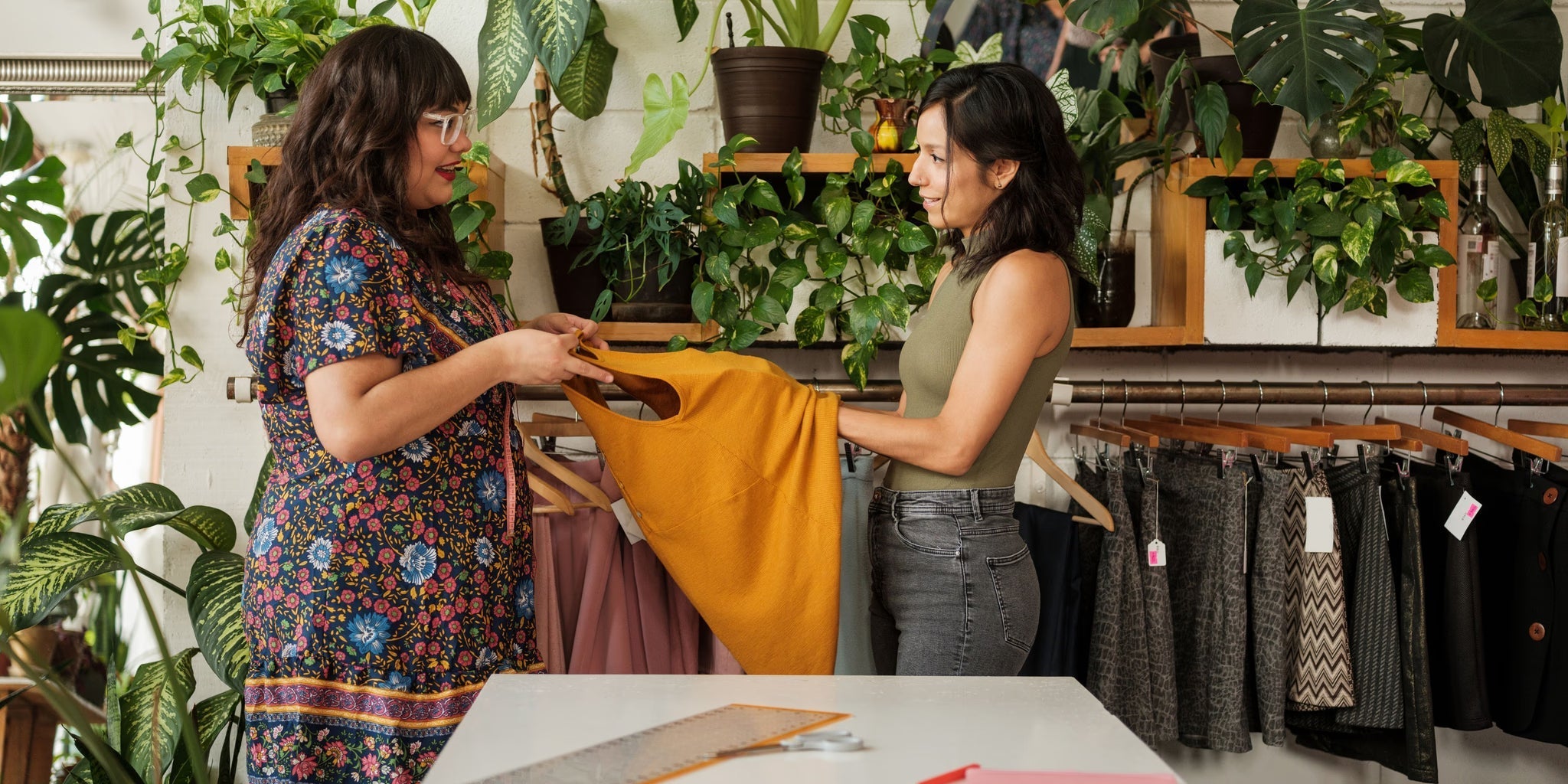The fashion industry has embraced collaboration as a creative force—amplifying visibility, reach, and cultural impact. But collaboration shouldn’t stop at campaigns and collections. To drive real change, it must extend deeper into the systems that power the industry.
Supply chains remain fragmented, and material procurement is stuck in outdated patterns—just as the pressure for sustainability, transparency, and efficiency reaches an all-time high.
These are opposing forces pulling in different directions, and without collective, tangible solutions, the sector will remain stalled.
Every idea and smart solution starts with pain points. And that’s exactly what fueled the creation of World Collective. Jeanine Ballone, our Founder and CEO, saw the necessity of creating a bold response to the structural gaps holding fashion back.
After 35 years navigating the complexities of this global industry, I’ve seen it all—the triumphs, the frustrations, and the undeniable need for change.” - Jeanine Ballone
This wasn’t about launching a tool—it was about rebuilding the infrastructure fashion truly needs.
That’s why World Collective has grown into a fully connected fashion ecosystem. One designed to eliminate friction, close the gaps between players, and give brands, designers, manufacturers, and suppliers the tools to drive real, measurable change.
How? Keep reading to find out!
What Is the World Collective Ecosystem—Really?
Fashion doesn’t need more noise—it needs smarter connection.
World Collective was built as a global aggregator: an ecosystem that unites the tools, platforms, and partners driving real progress across the supply chain.
By connecting certified materials, sourcing solutions, and forward-thinking partners, we’re creating the infrastructure for a smarter and sustainable fashion industry—one that’s faster, more transparent, and built to scale.
That’s why World Collective is grounded in three core pillars:
-
Technology: A centralized infrastructure for sourcing and resources that reduces fragmentation and unlocks efficiency.
-
Sustainability: Built-in ESG tools and traceability features that move businesses beyond greenwashing and toward measurable progress.
-
Connectivity: A global network of serious buyers and vetted suppliers working together to raise the standard for responsible sourcing.
At the core of the ecosystem, is our global textile and material sourcing platform: a innovative space that connects certified textile suppliers with worldwide buyers, giving brands the tools to source fabrics and materials with confidence, including access to detailed information on supplier credentials, material composition, and sustainability attributes.
Everything happens in one place, from discovering textiles to making ESG-aligned sourcing decisions, so designers, brands, manufacturers, retailers, and suppliers can work smarter, faster, and more transparently.
Tackling Fashion’s Real Pain Points
Let’s talk about the actual roadblocks holding the industry back and how we dismantles them:
-
Fragmented Sourcing Processes
The typical sourcing journey is a mess. Multiple platforms, endless email chains, disconnected catalogs and zero traceability.
Global supply chains are notorious for miscommunication, delays, and cost overruns. These inefficiencies make it harder for brands to remain competitive and for suppliers to maintain reliability.
Jeanine Ballone
World Collective offers a single, intuitive platform where sourcing is fast, organized, and compliant. Search by certifications, performance metrics, fiber content, or MOQ. No more guesswork. No more spreadsheets.
-
Supplier Visibility Issues
Suppliers are not solely responsible for fashion’s sustainability challenges, but they are often overlooked in shaping the solutions.
With hands-on control of production and material sourcing, they can play a pivotal role in driving progress—if they’re brought into the conversation.
As this piece explores, meaningful change in fashion won’t happen without supplier inclusion at the core.
Furthermore, according to a report by Transformers Foundation cited in Vogue Business, one of the most significant obstacles to real progress in fashion sustainability is the lack of supplier involvement in decision-making processes.
In other words, World Collective’s vison is rooted in dismantling these silos and creating a collaborative ecosystem.
“Every supplier should have the opportunity to showcase their innovations, certifications, and materials”, Jeanine emphasized at Web Summit in Lisbon.
“We’re not just giving brands a tool to source sustainably—we’re giving suppliers a voice and a platform to drive change.” - Jeanine Ballone

On World Collective Marketplace, suppliers have digital profiles where they can highlight their full capabilities—from certifications and regions to material specs and technical innovations—making them visible, verified, and directly accessible to buyers.
-
Disconnected Sustainability Goals
Brands often speak of sustainability, but outdated supply chain models still drive wholesale overproduction—fueling waste, environmental harm, and financial loss.
And just like we outlined in the previous section of this article, brands often overlook the critical role of supplier collaboration in achieving sustainability goals. According to McKinsey Sustainability, 70–75% of a fashion company’s Scope 3 emissions originate upstream—primarily from purchased materials. When suppliers are excluded from strategy, progress toward true sustainability stalls.
World Collective helps shift that paradigm.
As an evolving platform, World Collective is continuously expanding its capabilities. Soon, we’ll introduce tools that enable brands, suppliers, and other stakeholders to track key environmental indicators—such as carbon emissions, water usage, and more—throughout their production processes.
These features will not only support smarter decision-making but also help users comply with emerging sustainability regulations and align with evolving industry standards.
The Engine Powering It All
As mentioned, the World Collective digital sourcing platform is the engine that drives the ecosystem forward. But it’s not your typical sourcing directory. It’s curated, credible, and collaborative.
For Suppliers:
-
Global Reach: Connect directly with verified brands across markets.
-
Full-Spectrum Product Profiles: Highlight your materials with specs, certifications, and traceability in one place.
-
Real-Time Demand Insights: Track buyer activity, material views, and sample requests to optimize your sales strategy.
-
Tell Your Story: Build a dedicated profile to share your origin, expertise, specialization, and values—let buyers see the people behind the product.
For Brands:
-
Simplified, Streamlined Sourcing: Curate certified materials from multiple suppliers in one order.
-
Built-In Compliance: Meet sustainability standards and traceability needs from the start.
-
Flexible Quantities, Low MOQs: Order what you need—no more, no less.
-
Access to Innovation: Discover standout materials and rising suppliers to differentiate your next collection.
Accessibility, Next-Gen Materials, Innovation and Constant Evolution
We understand that innovation holds true value when it’s accessible to everyone.
That’s why we offer a curated selection of certified, sustainable, and next-generation materials with low minimum order quantities (MOQs starting at 5 meters). This opens doors for brands of all sizes to source responsibly and transparently.
Added to that, we collaborate with trusted mills, suppliers, associations, and certifying associations to ensure our marketplace materials meet global sustainability, performance standards, and regulatory requirements.
Moreover, our approach is dynamic—we actively seek feedback from our community, stay ahead of industry benchmarks and regulatory changes, and constantly evolve as a startup.
We’re committed to co-creating solutions with our ecosystem, ensuring our marketplace remains responsive and relevant for everyone involved.
Whether you're scaling a startup collection or transforming a global supply chain, World Collective meets you where you are—then helps you grow.
Why Supply Chain Transparency is Crucial for all Fashion Stakeholders
There are two critical angles to consider when discussing the need for transparency in fashion supply chains: the ethical and the business-driven.
Ethically, the consequences of opacity are severe: rampant overproduction, environmental damage, labor exploitation, and unsafe operational conditions. Transparency directly ties to ethics—without it, sustainability remains a facade.
Transparency is the foundation of an ethical supply chain. It allows workers, unions, and groups of people like us to scrutinize the working conditions of these factories, and ensure that garment workers are treated and paid fairly.
Quote by Oxfam Aotearoa (worldwide development organisation that mobilises the power of people against injustice)
On the other hand, from a policy and business perspective, as global trade shifts, so do risks and opportunities.
According to Patricia Lagan, Supply Chain Advisor at World Collective, tariffs and trade regulations can force businesses to reconsider their supply chains, creating disruptions and supply challenges.
Transparency allows brands to adapt to these shifts by understanding risks and identifying opportunities for improvement.
Moreover, while some countries regress on sustainability, others, like the EU, continue pushing forward. On April 16th, the European Commission published the first working plan for the Ecodesign for Sustainable Products Regulation (ESPR).
This will reshape product design and production, with phased requirements expected by 2027.
→ For brands, this means adapting designs for sustainability, ensuring supply chains are energy-efficient, and preparing for stricter transparency regulations.
→ For suppliers, it means meeting new material and data standards, including clearer transparency on recycled content and systems for sharing trackable product data.
Ultimately, transparency is no longer a niche value for eco-conscious brands—it’s a baseline requirement for anyone looking to stay competitive as global regulations tighten. It’s not just an ethical priority (though that remains essential); it’s a strategic necessity for doing business from now on.
Therefore, by adopting transparency, brands can remain competitive in a fast-changing market, comply with regulations, and establish trust with consumers, all of which contribute to sustainable growth and strength in a highly competitive environment.
Setting New Standards—Together
The systems holding fashion back won’t change themselves. That’s why World Collective exists—to give you the infrastructure, network, and data you actually need to make better sourcing decisions and build a supply chain that works.
Whether you're a brand looking for verified materials, a designer seeking transparency, or a supplier ready to connect with serious buyers—we've built the tools and partnerships to get you there.
Ready to tap into the World Collective ecosystem? Here’s how to get started:
Whether you're exploring a collaboration, need support, or want to partner with us—send us an email at info@world-collective.com and let’s talk.



